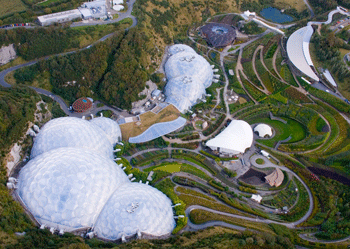Community Planning: Case studies: 013
The Eden Project
intro
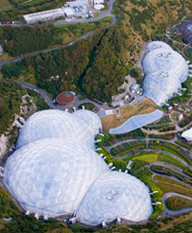
Theme
Mining landscape regeneration
Mining landscape regeneration
Location
Bodelva, near St. Austell, Cornwall, UK
Bodelva, near St. Austell, Cornwall, UK
Project leader:
The Eden Project
The Eden Project
Imaginative and highly ambitious regeneration project which turned a redundant quarry into an immensely successful visitor attraction of national and international stature. Gaining the support of, and involving, local people throughout has been a key aspect of the project’s success.
intro
The Process
key to colour coding
| Intense community planning activity Events, workshops, meetings, open house events, exhibitions. |
||
| Moderate community planning activity Surveys, consultation periods. |
||
| Low level community planning activity Preparation, revising documents, survey analysis, design work |
||
| Key points in community planning process Formation of organizations or partnerships, launch of initiatives, project completion. |
||
| Other relevant events and activities Local election, local plan adoption, tendering. |
||
| Nothing much happening Waiting, breathing spaces |
||
1990
Dec
Forerunner - Lost Gardens of Heligan
-
Restoration of overgrown gardens at Heligan, Cornwall, begins.
1995
Vision
-
Developed by a group of those involved with Heligan led by Tim Smit and Jonathan Ball. Aim to build the world’s biggest greenhouse to tell the story of the interdependency of plants and people. Believed that a landmark, iconic structure – recognizable around the world – would bring many people to Cornwall just to see it.
Seed funding provided by the Restormel Borough Council (now defunct) 25k
1996
/1997
Mar Building the vision
Mar Building the vision
- Engaging with the local media.
- Presentations to interested parties around the county.
- Targeting key opinion-formers and decision-makers.
- Engaging with immediate neighbours.
- Exploring collaboration with educational institutions.
- Presentations to local groups
- Being available to interested parties at all times
1998
Application for planning permission
-
Building a new access road was key to planning permission. This took two years and caused more difference of opinion than the project itself.
1998
Oct
Site acquisition
-
Bodelva china clay quarry. An irregularly-shaped, 22 hectare hole of 30 – 70 metres depth.
1999
Dec
Construction starts
2000
May
Visitor centre opens
- Public able to view construction creating a sense of public anticipation and ownership – especially among the locals.
2001
Mar
Eden fully open to public
2001
/2011
Sep
Ongoing engagement with the community
- Local community engagement reinforced by Eden's commitment to:
- Local employment
- Local sourcing and business support
- Year-round opening, even though Cornwall primarily a summer tourist destination, the project has helped to extend the tourism season from February to November.
- Preference given to Cornish schools when booking schools visitEngaging local schools in international programmes such as Gardens for Life, while providing support for teachers.
- Entry deals for local people.
- Opening in the winter evenings (provision of an ice rink, theatrical lighting in the landscape, music and drama, which has attracted an extra 120,000 people a year – mainly local – in the winter months)
- Its Cornish cultural heritage, evidenced through much of Eden’s creative approaches
context
Context
During the 20th century, Cornwall experienced the protracted contraction of its traditional primary industries – fishing, agriculture and mining.
This has left a legacy of 4,000 hectares derelict land, run-down, inland communities and a unique cultural landscape heritage of old mine sites, associated agricultural landscapes and the country garden estates created with mining finance, manifested today as a characteristic garden heritage.
The experience of restoring the Lost Gardens of Heligan showed that people’s interaction with plants was at least as interesting as the plants themselves. This approach, taking local, national and international perspectives, offered new opportunities to relate the importance of plants, and therefore the natural world, to the average person. Specific lessons of Heligan:
- By allowing visitors into the gardens during the restoration work, a sense of ownership – especially in the local community - was built, encouraging repeat visits to check on progress, and act as supporters in the local community;
- Visitors were fascinated in the stories of the people who tended the plants and the plant uses;
- The power of emotional engagement through art-led interpretation.
160 hectare site at Boldeva chosen because:
- It provides a beneficial microclimate for plants.
- It allows almost complete concealment of the site from the surrounding land – almost invisible until the visitor makes an entrance into the dramatic landscape on exiting the Visitor Centre.
- It demonstrates boldly that the planet’s despoilation by people can be reversed
outcomes
Outcomes - Successes
Eden has had a transformational effect on the society and economy of Cornwall in England’s south-western extremity and has been a phenomenal success beyond all expectations. In its first ten years, the ‘Eden Effect’:
- Injected more than £1 billion value-added (that is, excluding direct expenditures at Eden) into the local economy;
- Attracted more than 13 million visitors, 47% of whom were ‘extremely or very influenced’ by Eden to choose Cornwall as a holiday destination;
- Directly created 450 jobs;
- Hosted over 100,000 schoolchildren on organized schools visits;
- Supported 2,500 local suppliers;
- Become a symbol for the environment movement as a ‘can-do’ icon.
- High quality – Eden prides itself on the quality of its catering, its disability credentials, its interpretation and horticultural excellence and its cleanliness;
- Local sourcing of supplies (83% of catering supplies and 50% of all supplies from within the county) – worth £10 million per year to the county;
- Local sourcing of services – communications and marketing activity all supplied from within the county;
- Employment of local people wherever possible, coupled with a bespoke staff training programme, to encourage employees to strive higher within the organization;
- Access for people of all physical and learning abilities;
- Being media savvy – engaging with the broadcast and print media at all levels;
- Supply chain development – catalyzing suppliers’ abilities to grow their own markets;
- Local and regional strategic sustainable development initiatives;
- Innovation. Innovation permeates the organization’s civil engineering, construction, materials sourcing, waste management, employment policy, management structure, external relations, educational programmes, public learning and interpretation, plant health, nutrition and soils, horticultural and exhibit design and more.
Eden would not have happened without significant local community support, both from the county and from the site’s immediate neighbours.
Crucially, the project symbolizes what can be achieved by delivering an ambitious vision borne of local circumstances.
The project has developed as a major force in Cornwall, not simply in economic terms, but in the creative, enterprising approach it brings to waste management issues, transport, education, horticulture and accessibility issues.
Outcomes - Lessons learnt
Some of the key transferable lessons of the Eden Project are:
- Include the ‘unusual suspects’ to develop novel approaches;
- Develop local solutions according to local circumstances;
- Find a proven and charismatic leader;
- Engage with the local community from the start;
- Trust the democratic process – don’t just pay lip service to it;
- Monitor key environmental, social and economic indicators from the start to determine the impact of the regeneration project at a later stage;
- Develop a vision that excites;
- Do not compromise on quality;
- Pursue constructive local employment and sourcing policies to maximize the beneficial footprint of the project;
- Develop a positive institutional ‘can do’ attitude;
- Base partnership approaches on building trust and intellectual trade to develop synergy;
- Make education fun and engage visitors emotionally.
outcomes
Parties involved
Arup
Environmental engineers
www.arup.com
Davis Langdon
Construction consultants
www.davislangdon.com
Eden Trust
Formal charitable governing body
www.edenproject.com
Eden Project
Development team
www.edenproject.com
Key individuals:
social entrepreneur Tim Smit,
horticulturalists Philip McMillan Browse and Peter Thoday,
local architect Jonathan Ball
Cornwall County Council
Local authority
www.cornwall.gov.uk/
Friends of Heligan
Supporters group
www.heligan.com/friends-of-heligan
Grimshaw Architects
Architects
www.grimshaw-architects.com
Lost Gardens of Heligan
Visionaries and project Instigators
www.heligan.com
Land Use Consultants
Landscape masterplan
www.landuse.co.uk
Local parish councils
Local contact
McAlpines Joint Venture
Main contractors
www.sir-robert-mcalpine.com
National Lottery/Millennium Commission
Main funders
www.millennium.gov.uk
Restormel Borough Council
Local authority
www.restormel.gov.uk/
Sensory Trust
Inclusive environments consultant
www.sensorytrust.org.uk
South West Regional Development Agency
Regional development agency
www.southwestrda.org.uk
Tab
Funding and resources
It would not have been possible to construct Eden and, critically, maintain its educational and regeneration ethos without the huge injection of public funds.
Total cost (from 1998 to August 2006) £133 million, which came from:
- National Lottery/ Millennium Commission - £56 million
- Public sector (EU) - £25 million
- Public sector (UK) - £21 million
- Commercial loans - £19 million
- Self-finance - £12 million
- Buildings and infrastructure - £54 million
- Facilities for education, visitors and staff - £36 million
- Biomes (big greenhouses) - £21 million
- Plants and machinery - £12 million
- Land purchase - £7 million
- Computer equipment – £2 million
- Fixtures and fittings - £1 million
Tab
Special features
As Eden has grown so has the organisation’s outreach work. It works with a wide range of groups and individuals, building capacity through volunteering opportunities, creative workshops, formal education and community engagement events. The latter includes small projects such as establishing community orchards to large scale developments like St Austell Ecotown.
photo gallery
Tab
Tab
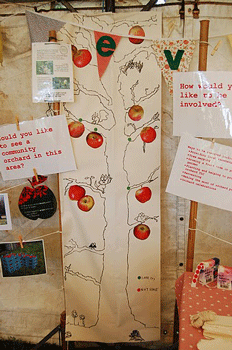
Clayfutures
Capturing local visions for villages in the Mid-Cornwall clay country and areas affected by the proposed St Austell Ecotown development, 2009
EdenProject02
© Eden Project
Capturing local visions for villages in the Mid-Cornwall clay country and areas affected by the proposed St Austell Ecotown development, 2009
EdenProject02
© Eden Project
close panel
Tab
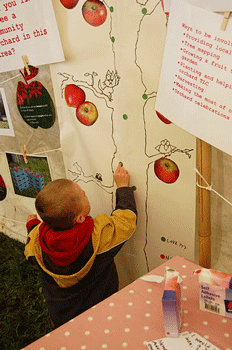
IClayfutures
Capturing local visions for villages in the Mid-Cornwall clay country and areas affected by the proposed St Austell Ecotown development, 2009
EdenProject03
© Eden Project
Capturing local visions for villages in the Mid-Cornwall clay country and areas affected by the proposed St Austell Ecotown development, 2009
EdenProject03
© Eden Project
close panel
Tab

Clayfutures
Capturing local visions for villages in the Mid-Cornwall clay country and areas affected by the proposed St Austell Ecotown development, 2009
EdenProject04
© Eden Project
Capturing local visions for villages in the Mid-Cornwall clay country and areas affected by the proposed St Austell Ecotown development, 2009
EdenProject04
© Eden Project
close panel
Tab

Orchard consultation
Community engagement for setting up a local community orchard, Bugle Village, July 2011
EdenProject05
© Eden Project
Community engagement for setting up a local community orchard, Bugle Village, July 2011
EdenProject05
© Eden Project
close panel
Tab

Orchard consultation
Community engagement for setting up a local community orchard, Bugle Village, July 2011
EdenProject06
© Eden Project
Community engagement for setting up a local community orchard, Bugle Village, July 2011
EdenProject06
© Eden Project
close panel
Tab
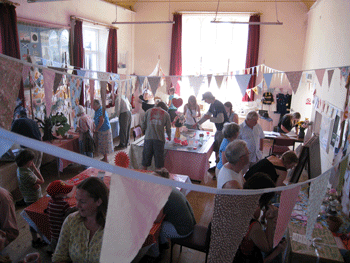
Orchard consultation
Community engagement for setting up a local community orchard, Bugle Village, July 2011
EdenProject07
© Eden Project
Community engagement for setting up a local community orchard, Bugle Village, July 2011
EdenProject07
© Eden Project
close panel
Tab
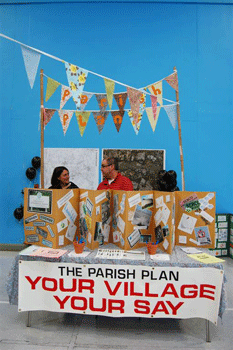
Orchard consultation
Community engagement for setting up a local community orchard, Bugle Village, July 2011
EdenProject08
© Eden Project
Community engagement for setting up a local community orchard, Bugle Village, July 2011
EdenProject08
© Eden Project
close panel
The Eden Project In sequence








Clayfutures
Capturing local visions for villages in the Mid-Cornwall clay country and areas affected by the proposed St Austell Ecotown development, 2009
EdenProject02
© Eden Project
Capturing local visions for villages in the Mid-Cornwall clay country and areas affected by the proposed St Austell Ecotown development, 2009
EdenProject02
© Eden Project

Clayfutures
Capturing local visions for villages in the Mid-Cornwall clay country and areas affected by the proposed St Austell Ecotown development, 2009
EdenProject03
© Eden Project
Capturing local visions for villages in the Mid-Cornwall clay country and areas affected by the proposed St Austell Ecotown development, 2009
EdenProject03
© Eden Project

Clayfutures
Capturing local visions for villages in the Mid-Cornwall clay country and areas affected by the proposed St Austell Ecotown development, 2009
EdenProject04
© Eden Project
Capturing local visions for villages in the Mid-Cornwall clay country and areas affected by the proposed St Austell Ecotown development, 2009
EdenProject04
© Eden Project

Orchard consultation
Community engagement for setting up a local community orchard, Bugle Village, July 2011
EdenProject05
© Eden Project
Community engagement for setting up a local community orchard, Bugle Village, July 2011
EdenProject05
© Eden Project

Orchard consultation
Community engagement for setting up a local community orchard, Bugle Village, July 2011
EdenProject06
© Eden Project
Community engagement for setting up a local community orchard, Bugle Village, July 2011
EdenProject06
© Eden Project

Orchard consultation
Community engagement for setting up a local community orchard, Bugle Village, July 2011
EdenProject07
© Eden Project
Community engagement for setting up a local community orchard, Bugle Village, July 2011
EdenProject07
© Eden Project

Orchard consultation
Community engagement for setting up a local community orchard, Bugle Village, July 2011
EdenProject08
© Eden Project
Community engagement for setting up a local community orchard, Bugle Village, July 2011
EdenProject08
© Eden Project
Tab
Documents available. Please click on the image or information below it to download and display pdfs
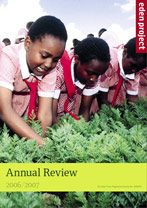
download pdf -
41 pages A4 5 MB
Eden Project Annual review
2006 - 2007
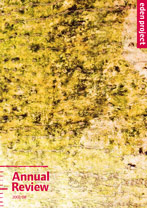
download pdf -
23 pages A4 5.2 MB
Eden Project Annual review
2007 - 2008

download pdf -
48 pages A4 4 MB
Eden Project Annual review
2008 - 2009
Books
Eden by Tim Smit, Eden Project Books, 2011;
Out of Eden by the Eden Team, Eden Project Books, 2005
Eden by Tim Smit, Eden Project Books, 2011;
Out of Eden by the Eden Team, Eden Project Books, 2005
Films available on DVD
Eden: The Inside Story and The Gardening of Eden.
Both © The Eden Project Ltd. Obtain from The Eden Project
Eden: The Inside Story and The Gardening of Eden.
Both © The Eden Project Ltd. Obtain from The Eden Project
Tab
Quotes
"Eden would not have happened without significant local community support, meaning support from the county as a whole and from the immediate neighbours."
"The preview opening of Eden’s Visitor Centre, in May 2000, was key to nurturing a sense of ownership in the county, and fuelled a developing sense of anticipation nationally, particularly through the media."
Pete Whitbread-Abrutat, The Eden Project, 2006
Tab
Reviews
"Eden provides an excellent example for the re-use of a brownfield site for a major transformational regeneration project. A china clay pit was chosen to show that people can have a positive impact on their surroundings – hopefully inspiring them into action in their own lives – as an antidote to the constant and consistent bombardment of environmental doom and gloom purveyed daily by the mass media. The regeneration lessons learned from Eden are applicable to anyone or any community or organization, as well as to the mining sector in general."
Pete Whitbread-Abrutat, The Eden Project, 2006
Tab
